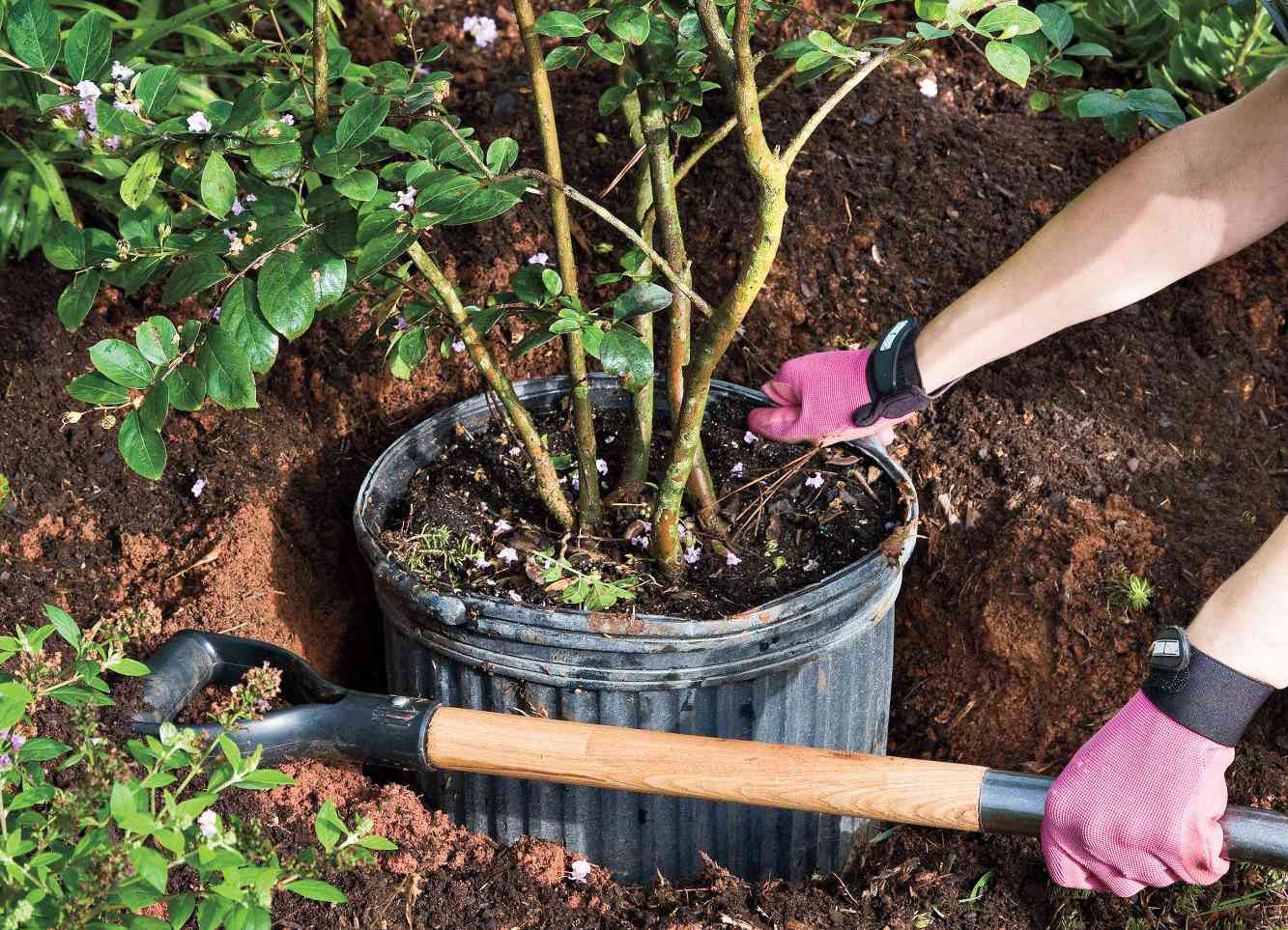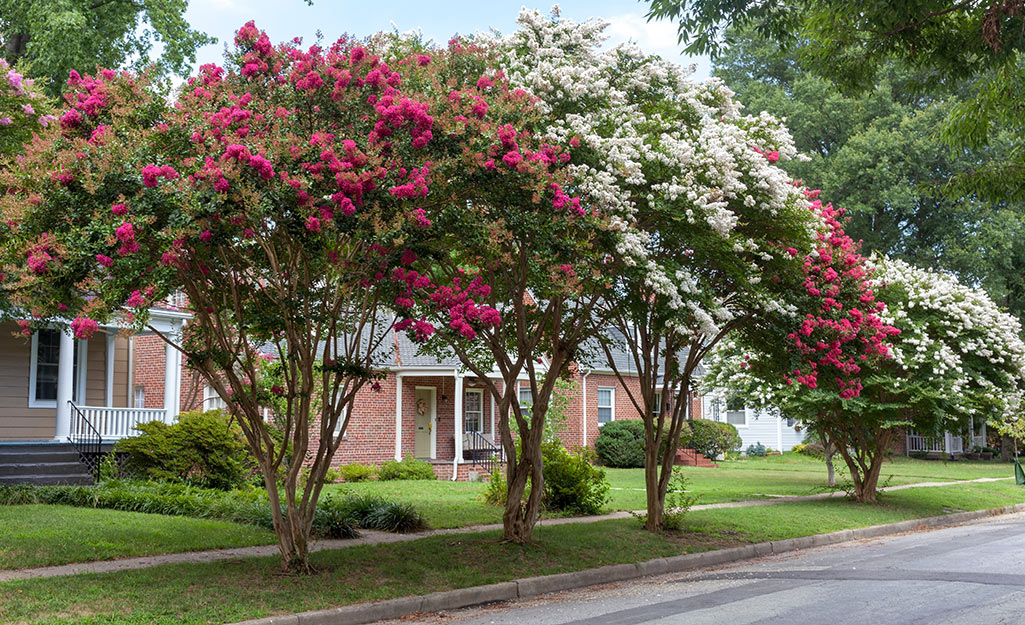
Planting And Growing Crape Myrtles: Your Ultimate Guide
To plant and grow Crape Myrtles, choose a sunny spot with well-draining soil. Water regularly during the first year.
Crape Myrtles are popular ornamental trees known for their vibrant blooms and hardy nature. They thrive in full sun and well-drained soil, making them ideal for many landscapes. These trees can tolerate a variety of soil types but prefer slightly acidic conditions.
Regular watering during the first year helps establish strong roots. Once established, Crape Myrtles require minimal maintenance. Pruning in late winter encourages new growth and abundant flowers. With proper care, these trees can provide stunning color and beauty to gardens and yards for many years.
Introduction To Crape Myrtles
Crape Myrtles are stunning trees that add beauty to any garden. These trees boast vibrant flowers, striking bark, and beautiful autumn foliage. They thrive in warm climates and can be a gardener’s delight. This guide will help you understand these wonderful plants better.
History And Origin
Crape Myrtles, scientifically known as Lagerstroemia, are native to Asia. They originated in China, Korea, and Japan. Traders introduced them to the United States in the 18th century. Since then, they have become popular garden favorites.
These trees are known for their resilience and long blooming periods. They can withstand drought and high temperatures. This makes them perfect for regions with hot summers.
Popular Varieties
There are several varieties of Crape Myrtles to choose from. Each variety offers unique colors and growth patterns. Here are some popular choices:
| Variety | Flower Color | Height |
|---|---|---|
| Natchez | White | 20-30 feet |
| Muskogee | Lavender | 15-20 feet |
| Tonto | Red | 10-15 feet |
| Sioux | Pink | 15-20 feet |
Choosing the right variety depends on your garden’s size and climate. Smaller gardens might prefer dwarf varieties. Larger spaces can accommodate taller trees.
Crape Myrtles come in a range of colors. From white to deep red, there’s a shade for everyone. Their flowers bloom in clusters, creating a stunning visual display.
Choosing The Right Location
Planting and growing crape myrtles starts with picking the perfect spot. The right location ensures your plant thrives and blooms beautifully. Let’s explore the key factors to consider for choosing the best location.
Sunlight Requirements
Crape myrtles love sunlight. They need at least six hours of direct sunlight each day. Full sun helps them produce more vibrant blooms. Plant your crape myrtles in a sunny area for best results.
Soil Conditions
Crape myrtles prefer well-draining soil. They do not like soggy roots. Ensure the soil is not heavy clay. Add compost to improve soil quality. Check the pH level; they thrive in slightly acidic to neutral soil.
| Soil Type | Condition |
|---|---|
| Well-draining | Preferred |
| Heavy Clay | Not Ideal |
| Slightly Acidic | Optimal |
Use mulch to retain moisture and reduce weeds. Mulching keeps the soil cool and helps crape myrtles grow better.
- Ensure soil drains well
- Add compost for nutrients
- Check soil pH
- Use mulch around the base
By carefully selecting the right location, you give your crape myrtles the best start. Happy planting!
Planting Crape Myrtles
Planting crape myrtles can transform your garden with vibrant blooms. These hardy trees thrive in many climates. They are a favorite for their long-lasting flowers and minimal care needs.
When To Plant
The best time to plant crape myrtles is in early spring. This gives the tree enough time to establish roots before the heat. Fall is also a good option, allowing roots to grow before winter.
Step-by-step Planting Guide
- Choose the Right Spot: Select a spot with full sun. Crape myrtles need at least 6 hours of sunlight daily.
- Prepare the Soil: Ensure the soil is well-draining. Loosen it to a depth of 12 inches.
- Dig the Hole: Dig a hole twice as wide as the root ball. The depth should match the root ball’s height.
- Place the Tree: Gently place the crape myrtle in the hole. Ensure the top of the root ball is level with the ground.
- Backfill the Hole: Fill the hole with soil. Firmly press the soil around the base to remove air pockets.
- Water Thoroughly: Water the tree deeply. This helps settle the soil and hydrate the roots.
- Mulch: Add a 2-3 inch layer of mulch around the base. Keep mulch 2 inches away from the trunk.
Follow these steps for a healthy and beautiful crape myrtle.
Watering And Feeding
Ensuring the proper watering and feeding of your crape myrtles is crucial for their health and vibrant blooms. This section will guide you through the best practices for watering and feeding these beautiful trees.
Watering Schedule
Crape myrtles need a consistent watering schedule to thrive. Water them deeply once a week. This helps the roots grow deep and strong. During hot, dry periods, increase the frequency to twice a week.
New plants require more water. For the first two months, water them every other day. After that, reduce to twice a week. Use a soaker hose or drip irrigation to avoid wetting the leaves. This prevents diseases.
Fertilizer Tips
Proper fertilization ensures lush foliage and abundant blooms. Use a balanced fertilizer with equal parts nitrogen, phosphorus, and potassium (10-10-10).
Apply fertilizer in early spring, just before new growth starts. Spread it evenly around the base of the plant, avoiding direct contact with the trunk. Water thoroughly after applying the fertilizer.
| Time of Year | Fertilizer Type | Application Frequency |
|---|---|---|
| Early Spring | Balanced (10-10-10) | Once |
| Mid-Summer | Balanced (10-10-10) | Once |
Avoid over-fertilizing. Too much nitrogen promotes foliage growth at the expense of blooms. Always follow the instructions on the fertilizer package.
For organic options, consider compost or well-rotted manure. These provide nutrients and improve soil health.
Pruning Techniques
Pruning is an essential part of growing healthy crape myrtles. Proper pruning ensures vibrant blooms and a well-shaped tree. This section covers the best practices for pruning crape myrtles.
When To Prune
Pruning crape myrtles is best done in late winter or early spring. During this time, the tree is dormant, making it easier to shape. Pruning in late winter helps avoid damage to new growth.
Pruning Methods
Different methods of pruning can be used depending on your goals. Here are some common techniques:
- Thinning: Remove entire branches back to the main trunk. This improves air circulation and light penetration.
- Heading: Cut back to a bud or branch. This encourages bushier growth.
- Deadheading: Remove spent blooms. This promotes further flowering.
Follow these methods to ensure healthy growth and vibrant blooms. Use sharp tools to make clean cuts. Always sterilize your tools to prevent disease.
| Technique | Purpose |
|---|---|
| Thinning | Improve air circulation |
| Heading | Encourage bushier growth |
| Deadheading | Promote further flowering |
Proper pruning techniques ensure your crape myrtles thrive. Happy gardening!

Credit: www.homedepot.com
Pest And Disease Control
Planting and growing Crape Myrtles can be a joy. But, you must watch for pests and diseases. Proper care ensures your plants stay healthy and thrive. Below, we’ll explore common pests and preventative measures.
Common Pests
Several pests can affect Crape Myrtles. Here are some common ones:
| Pest | Description |
|---|---|
| Aphids | Small insects that suck sap from leaves. |
| Japanese Beetles | Beetles that chew on leaves, causing damage. |
| Spider Mites | Microscopic pests that cause leaf discoloration. |
Preventative Measures
To keep pests away, follow these steps:
- Inspect your plants regularly for signs of pests.
- Use a strong spray of water to remove aphids.
- Introduce beneficial insects like ladybugs.
- Apply insecticidal soap for severe infestations.
- Keep the area around your plants clean.
These steps can help reduce pest problems. Keeping your Crape Myrtles healthy is key. Healthy plants are less likely to suffer from pests.
Seasonal Care
Proper seasonal care ensures your crape myrtles thrive all year. Each season brings specific tasks to keep these beautiful trees healthy. In this section, we will cover winter protection and spring maintenance.
Winter Protection
Winter can be harsh on crape myrtles. Protecting them is crucial for their survival. Here are some steps to ensure your crape myrtles stay safe during winter:
- Mulch: Add a thick layer of mulch around the base. This helps insulate the roots.
- Pruning: Trim any dead or weak branches. This prevents damage from snow and ice.
- Watering: Water the trees well before the first freeze. This ensures they have enough moisture.
- Covering: Use burlap or frost cloth to cover young trees. This protects them from harsh winds and frost.
Spring Maintenance
Spring is the season of growth. Your crape myrtles need special attention to flourish. Follow these steps for effective spring maintenance:
- Remove Winter Covers: Take off any protective coverings. Allow the tree to get sunlight and air.
- Fertilize: Apply a balanced fertilizer. This boosts new growth and flowering.
- Check for Pests: Inspect the tree for any signs of pests. Treat immediately if you find any.
- Pruning: Lightly prune to shape the tree. Remove any dead or crossing branches.
- Watering: Ensure the tree gets adequate water. Young trees need more frequent watering.
Taking these steps for seasonal care helps your crape myrtles thrive. They will reward you with stunning blooms and healthy growth.

Credit: www.homedepot.com
Landscape Uses
Crape Myrtles are versatile and stunning additions to any garden. These trees and shrubs offer vibrant blooms and attractive bark. They enhance landscapes with their beauty and functionality.
Garden Design Ideas
Crape Myrtles can be used in various garden designs. Their colorful flowers and appealing bark make them perfect focal points.
- Single Specimen: Plant one Crape Myrtle as a centerpiece.
- Hedges: Use multiple Crape Myrtles to create a flowering hedge.
- Mixed Borders: Combine them with other plants for a layered look.
- Patio Trees: Smaller varieties work well in pots on patios.
These ideas can transform your garden into a vibrant space.
Companion Plants
Crape Myrtles thrive well with several companion plants. These plants enhance the overall beauty and health of your garden.
| Plant | Benefits |
|---|---|
| Lavender | Repels pests and adds fragrance. |
| Daylilies | Provides ground cover and colorful blooms. |
| Hostas | Thrives in shade areas around Crape Myrtles. |
| Coneflowers | Attracts pollinators and adds vibrant color. |
Using these companion plants ensures a healthy and beautiful garden.

Credit: arborgate.com
Frequently Asked Questions
What Is The Best Month To Plant Crepe Myrtles?
The best month to plant crepe myrtles is early spring. This allows roots to establish before summer heat.
Where Should You Not Plant Crepe Myrtles?
Avoid planting crepe myrtles near structures, utility lines, and in poorly drained soil. Keep them away from other large trees.
How To Properly Plant A Crepe Myrtle?
Plant crepe myrtles in well-draining soil with full sun. Dig a hole twice the width of the root ball. Place the tree at the same depth it was in the pot. Fill the hole with soil and water thoroughly. Mulch around the base to retain moisture.
Where Is The Best Place To Plant Crepe Myrtles?
Plant crepe myrtles in full sun for optimal growth. Ensure well-drained soil and space for air circulation. Avoid shaded areas.
Conclusion
Planting and growing crape myrtles can transform your garden. These beautiful trees are easy to care for. With proper sunlight and watering, they thrive. Enjoy vibrant blooms and a stunning landscape. Follow these tips to ensure your crape myrtles flourish.
Start planting today and create a breathtaking garden oasis.

